Learning Management Systems (LMS) have become essential to the e-learning sector after the globally increased adoption of remote work and online education due to the pandemic. This global lockdown forced individuals, businesses, and learning institutions to quickly jump to the virtual learning platform. According to the research, in 2024, the estimated number of LMS users will be 73.8 million, and the number is increasing rapidly.
But even with LMS’s unquestionable importance and prevalence, selecting the best one is still challenging. Apart from analyzing factors like LMS pricing and features, it is necessary to understand the various types of LMS available in the market. To address this matter, this blog will discuss and compare two types of LMS, cloud-based and self-hosted. The aim of this blog is to eliminate difficulties and help you make a sound decision.
Comparison between Cloud and Self-hosted LMS
It is indisputable that Learning Management Systems are integrated in almost every online learning platform. While most of us are familiar with the basics of LMS, this discussion will provide a deeper analysis by contrasting different LMS types to make a well-rounded decision.
Cloud-based LMS is hosted off-site on any third-party server. This means that instead of installing and maintaining the local server or data centers, you can access the system through the web browser. Self-hosted Learning Management Systems (LMS) are installed and operated within an organization’s own server or data center. By housing the LMS within their IT environment, businesses can customize the system to align precisely with their unique training and development objectives.
Below, is a detailed comparison of both variations to give you prospect of a broader picture:
Customization and Control
Cloud-based LMS
Cloud-based LMS are designed to be ready-to-use with minimal setup, offering limited options for customization. You can adjust branding elements to match your organization’s identity but deeper modifications to the product’s design or functionality are generally not possible. However, cloud-based solutions are often at the cutting edge of educational technology. They provide a comprehensive set of features that meet most standard requirements without the need for extensive customization.
Self-hosted LMS
Self-hosted LMS grant complete authority over the platform, enabling extensive customization of both design and features. This means you can customize the platform to fit specific needs, from altering the user interface to integrating third party plugins or creating entirely new functionalities. The key here is access to the source code, which allows for a high degree of flexibility and personalization.
Here are some of the most sought-after features that LMS owners often look to incorporate into their platforms:
- Customized user roles
- Extensive drip-feeding for content release
- Attendance tracking
- Option to reset entire courses
Ease of Maintenance
Cloud-based LMS
LMS based on the cloud is ideal for small teams with less development staff. It lessens the burden on LMS owners by managing website maintenance and LMS upgrades. Additionally, it handles troubleshooting errors or bugs and provides technical support. Automated backups ensure your data is regularly saved and can be restored if needed. The cloud LMS allows for easy scaling, adjusting resources automatically based on user demand.
Self-hosted LMS
A self-hosted LMS requires your attention to fix any technical issues or make improvements. You also need to maintain the website, upgrade plugins, and troubleshoot any errors or bugs. Security protocols, such as firewalls and SSL certificates, must be implemented and updated by the LMS owners.
Database management is also necessary, with regular optimization and backups to maintain performance. If your LMS is customized, you must ensure these customizations remain compatible with updates. Moreover, resource allocation, including managing CPU, memory, and storage, is important as your user base grows, to keep the LMS running smoothly.
Cost Structure
Cloud-based LMS
When using SaaS LMS (cloud LMS), you have the option to find affordable solutions and pay only for the services you use. If your business needs change, you can switch the subscription and expand the functionality of your LMS.
The learner based model is a common pricing structure for cloud-based learning management systems (LMS). In this model, LMS owners pay a fixed fee for a predetermined number of learners. The more learners enrolled, the cheaper it becomes for each individual.
In the table below, you’ll find the basic subscription options for cloud-based LMS platforms. For a closer look at pricing and additional features, visit their websites to learn more.
| Cloud Based LMS | Basic | Grow | Pro |
| Talentlms | Price: $828/year Users: 1 – 20 Unlimited courses Consultation call: Yes Custom reports: No Live chat support: No Remove branding: No Linked-in integration: No Automation: No Priority email support: No | $1308/year Users: 1 – 20 Unlimited courses Consultation call: Yes Custom reports: Yes Live chat support: No Remove branding: No Linked-in integration: Yes Automation: No Priority email support: No | $1668/year Users: 1 – 20 Unlimited courses Consultation call: Yes Custom reports: Yes Live chat support: Yes Remove branding: Yes Linked-in integration: Yes Automation: Yes Priority email support: Yes |
| Teachable | $468/year Transaction fee: 5% Courses: 5 Live chat support: No Email Marketing: Yes Custom user roles: No Students Reporting: No Remove branding: No Affiliate Marketing: No | $1428/year Transaction fee: 0% Courses: 50 Live chat support: Yes Email Marketing: Yes Custom user roles: No Students Reporting: No Remove branding: Yes Affiliate Marketing: Yes | $2388/year Transaction fee: 0% Courses: 200 Live chat support: Yes Email Marketing: Yes Custom user roles: Yes Students Reporting: Yes Remove branding: Yes Affiliate Marketing: Yes |
| Kajabi | $1428/year Users: 50 Products:3 Website: 1 Affiliate Program: No Custom Branding: No 24/7 Support: No Custom Code Editor: No | $1908/year Users: 1000 Products:15 Website: 1 Affiliate Program: Yes Custom Branding: Yes 24/7 Support: Yes Custom Code Editor: No | $3828/year Users: 10000 Products:100 Website: 3 Affiliate Program: Yes Custom Branding: Yes 24/7 Support: Yes Custom Code Editor: Yes |
The prices listed in the table above reflect the cost for a starting number of users. As you add more users, the pricing for each plan will adjust accordingly, with costs increasing to match your expanding needs. Similarly, When the number of users in a cloud-based LMS exceeds the predefined limit, the LMS owner have to consider upgrading to an enterprise plan. Enterprise plans, characterized as customized solutions, are designed to accommodate extensive user bases or specific requirements beyond those offered by standard plans.
Self-hosted LMS
On the contrary, self-hosting requires a yearly/monthly subscription for server/hosting, recurring maintenance, updates, and LMS plugin subscription. It might be the more friendly option for users with long-term plans or high resource utilization. However users will be responsible for any externalities in the event of a spike in consumption, a server malfunction, or a cyberattack, and other challenging circumstances.
However, despite these responsibilities, self-hosted LMS platforms provide the flexibility to scale and accommodate a growing number of users and courses. While they may not have all features built-in, you can customize the platform or integrate third-party tools to enable live chat support, remove branding, implement email marketing, and even incorporate affiliate marketing programs.
Take a quick glance at the pricing plans for various self-hosted LMS options. For detailed information about the features each one offers, be sure to visit their respective websites.
| Self Hosted LMS | LearnDash | LifterLMS | LearnPress |
| Core plugin | $199/year | Free | Free |
| Add-ons | Average: $69.5/add-on | Average: $219/add-on | Average: $31/add-on |
| Plugin Bundle | $299/year | $249/year | $299/year |
Self-hosted LMS pricing depends on several factors. These include the number of sites you want to license, the add-ons and bundles you select, and any additional support or customization services. It’s important to evaluate your needs and budget carefully to choose the best pricing plan for your organization.
Payment Gateways
Cloud-based LMS
Users have a variety of options to ensure seamless transactions and a positive user experience when choosing cloud based LMS. PayPal and Stripe are two of the most popular choices that offer sound, secure, and globally recognized services. Stripe, in particular, offers a wider range of payment methods, including credit and debit cards, making it a more versatile choice for your LMS. This ensures that your learners can easily make payments and enjoy a seamless learning experience.
Additionally, Apple Pay and Google Pay provide users with the convenience of making payments directly from their mobile devices to enhance the accessibility and ease of transactions. These mobile payment options are especially valuable in today’s mobile-first world, where users expect quick and secure payment solutions.

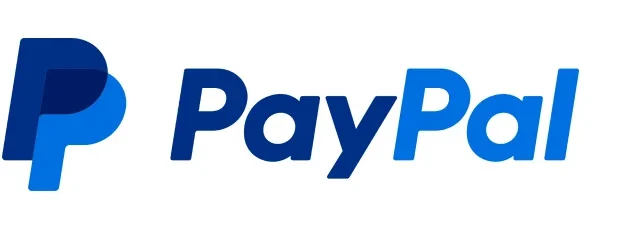


Self-hosted LMS
Self-hosted LMS platforms offer significant flexibility when choosing payment gateways. You’re not limited to a single provider; instead, you can leverage integrations with a wide range of popular services. This includes established names like PayPal, Stripe, Connect, Razorpay, 2Checkout, and Authorize.net. Self-hosted LMS platforms offer integration with popular e-commerce plugins like WooCommerce and Easy Digital Downloads (EDD).
This means you can leverage the extensive payment gateway support offered by these plugins directly within your LMS. Whether you need to accept payments via PayPal, Stripe, or other popular methods, you can easily integrate these options into your self-hosted LMS through WooCommerce or EDD.
GDPR Compliant
Cloud-based LMS
GDPR compliance works differently in cloud-based and self-hosted LMS platforms, with varying responsibilities for each.
In a cloud-based LMS, most GDPR compliance tasks are managed by the provider. This includes establishing data processing agreements to ensure that data is securely stored in GDPR-compliant data centers. Additionally, the cloud based LMS offers built-in features that allow users to exercise their GDPR rights, such as data access, rectification, or deletion.
The LMS is also responsible for handling security incident reports to make sure that affected parties and relevant authorities are informed as required by GDPR. Also, the LMS regularly updates the platform to maintain ongoing compliance with GDPR regulations.
This table outlines LMS platforms and their compliance status with GDPR regulations.
Self-hosted LMS
On the other hand, with a self-hosted LMS, you bear the responsibility for GDPR compliance. This means you must create and manage data processing agreements with any third parties involved in handling user data. You are also responsible for securely storing data, which involves implementing encryption, access controls, and ensuring that the data is stored in GDPR-compliant regions.
Furthermore, you need to configure your LMS to allow users to exercise their GDPR rights, which may require custom development or the use of specific plugins. In the event of a data breach, it is your duty to notify affected users and report the breach to the relevant authorities within the required time frame. Lastly, you must keep your LMS software, plugins, and customizations up to date to ensure ongoing GDPR compliance.
A quick comparison of cloud based and self hosted LMS is given below:
| Categories | Cloud Based LMS | Self-hosted LMS |
| Cost | Pay as you go! Predictable monthly or annual subscriptions. | Invest upfront! Lower ongoing costs after the initial server/hosting and plugins purchase. |
| Maintenance | The LMS provider handles updates, security, and maintenance. | Your IT team manages updates, security, and maintenance. |
| Scalability | As the number of users increases, you’ll need to move to a higher subscription plan accordingly. | Upgrading your server is needed to handle increased demand. |
| Security | Strong security measures provided and managed by the LMS provider. | Requires a strong internal security strategy for complete control. |
| Cost Structure | Pay a set fee for a specified number of learners, and the cost per learner decreases as enrollment increases. | Self-hosting involves an annual or monthly subscription for server hosting, along with ongoing costs for maintenance, updates, and LMS plugin subscriptions. |
| Upgrades | Automatic updates ensure you have the latest features and security patches. | Your IT team manages upgrades and ensures compatibility. |
| Customization | Few parameters of the system can be customized. | You can customize the server, plugins configurations, and security measures according to the need. |
Top Platforms of Cloud-based and Self-hosted LMS
Nowadays, using an LMS has become a requirement for colleges, schools, and companies worldwide. To meet the growing educational needs of staff and students, several learning management systems (LMS) with multiple features are available on the market. We offer a comparison of self-hosted and cloud-based (LMS) to assist people in selecting the ideal program for their requirements.
Cloud Based LMS
Talentlms
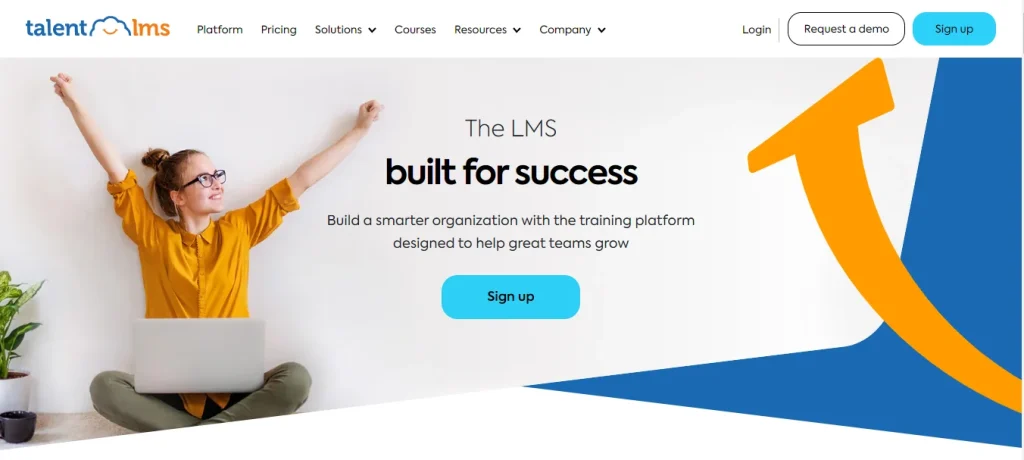
Talentlms was awarded for best LMS software and learning management system in 2003. It is an easy-to-use and ready-to-go platform for creating courses with gamification and certificates. It gives an option to access courses with any device even when you are offline. You can also include videos, presentations, and documents in the courses to make the content more engaging and user-friendly. Additionally, you have access to the library with 500+ pre designed courses.
Teachable

With a user base exceeding 100,000 creators and a student count surpassing 38 million, Teachable has solidified its position as a leader in the field. Teachable empowers you to create a wide range of courses to interactive live coaching sessions.
While Teachable’s extensive feature set makes it a versatile tool, it’s important to note that its depth may present a learning curve for those new to the platform. For individuals less familiar with technical tools, navigating Teachable’s functionalities might require a steeper learning curve.
Kajabi

Kajabi is a versatile cloud-based platform designed to streamline organizational learning and content marketing. As a comprehensive LMS solution, Kajabi empowers you to create engaging and impactful learning experiences, from live classroom to self-paced online courses.
Beyond its LMS capabilities, Kajabi also serves as a powerful content marketing platform. It offers individuals and SMBs a centralized hub for creating, selling, and delivering digital products such as online courses, membership sites, and training portals. With features like customizable themes, landing page builders, and integrated payments, Kajabi provides a comprehensive solution for building and promoting engaging content while facilitating sales and customer engagement.
Self Hosted LMS
Now, a few examples of self hosted LMS are listed below.
LearnDash
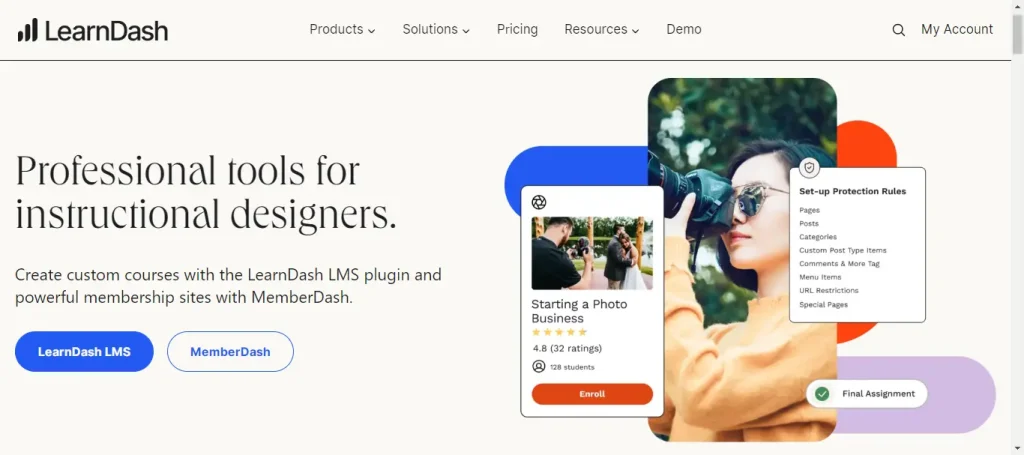
LearnDash is a professional tool for agencies, educators, institutional designers, and freelancers. You can integrate it with several payment gateways and e-commerce stores like Stipe, Paypal, 2Checkout, ThriveCart, SamCart, and many other third-party plugins. You can create courses easily by drag and drop course builder and use gamified material, like badges, coins, and certificates for achievements.
Pricing: LearnDah has different offers for the number of sites you have. You can get your LearnDash LMS for one site for $199/year.
LifterLMS

It is an effective option for your WordPress website that works for around 8.3+ millions users. Just install and activate the plugin and start building your courses without any hassle. It can easily integrate with a number of tools you ever need for maximum success like Mailchimp, WooCommerce, Gravity Forms, BuddyBoss, Paypal and so on. It also offers users the option to set prerequisites for lesson content, requiring the completion of tasks or specific activities to unlock new content.
LearnPress

LearnPress is a widely used self-hosted LMS plugin built on the WordPress platform with over 90,000 active installations. This popularity speaks to its reliability and effectiveness as a tool for creating and managing online courses. Additionally, the plugin integrates gamification elements to enhance engagement and motivation, while detailed reporting enables you to track student progress and identify areas for improvement.
Conclusion
In conclusion, choosing between a cloud-based LMS and a self-hosted LMS depends on your specific needs and priorities. Cloud-based solutions offer ease of use, automatic updates, and predictable costs, making them ideal for LMS owners with limited technical expertise or a rapidly growing user base. However, customization options are limited.
Self-hosted LMS platforms provide complete control and extensive customization possibilities.
By carefully considering the factors discussed in this blog post, you can make a decision about the best LMS type for your organization. Take a moment to assess your budget, technical capabilities, and level of desired customization before making your choice.
If you want to take your learning experience to the next level, explore LDninjas LMS solution today! Our LMS services offer customization, configuration, and maintenance services to enhance your e-learning website towards productivity, contact us to get started!



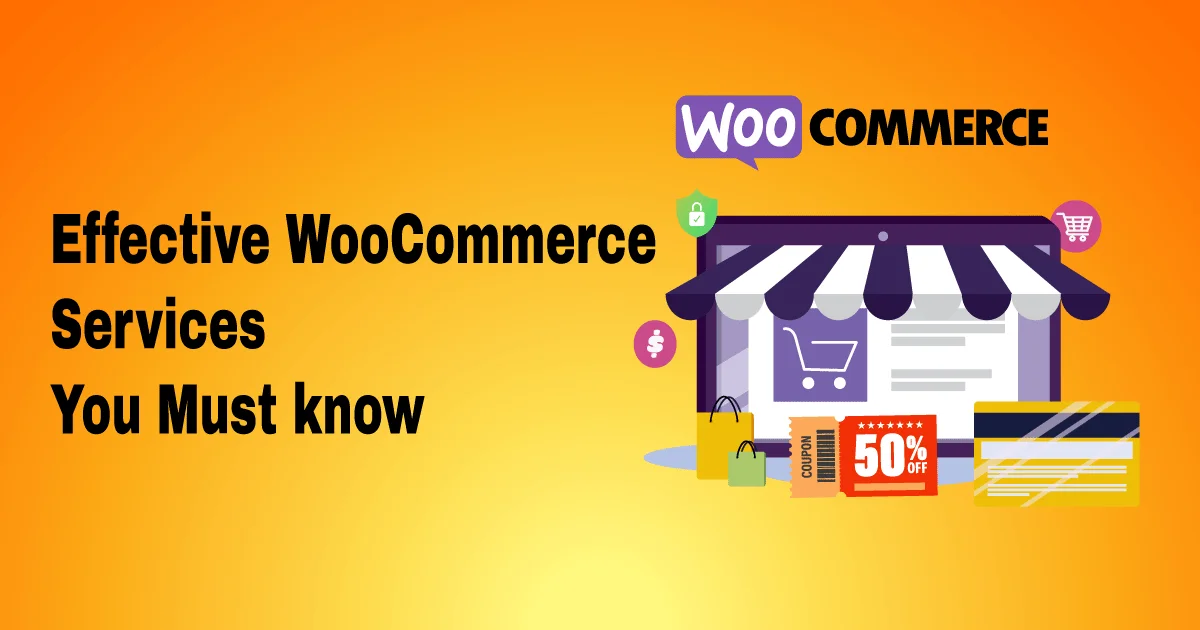
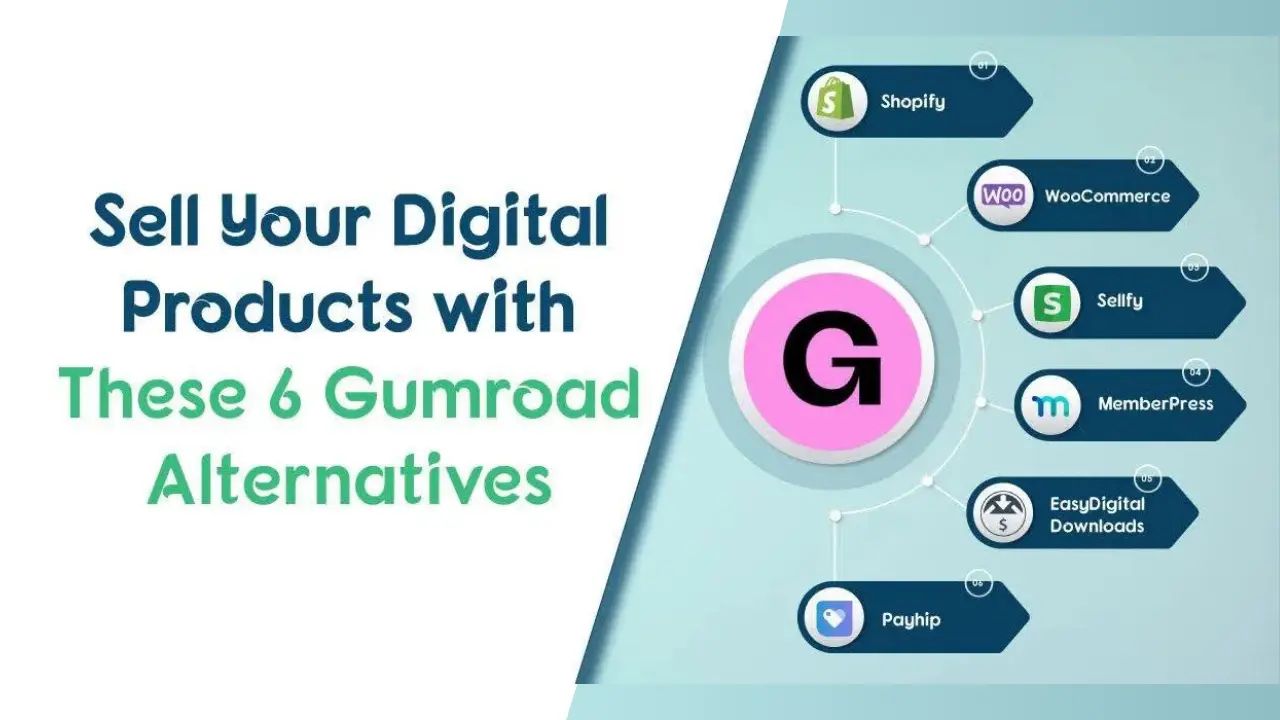
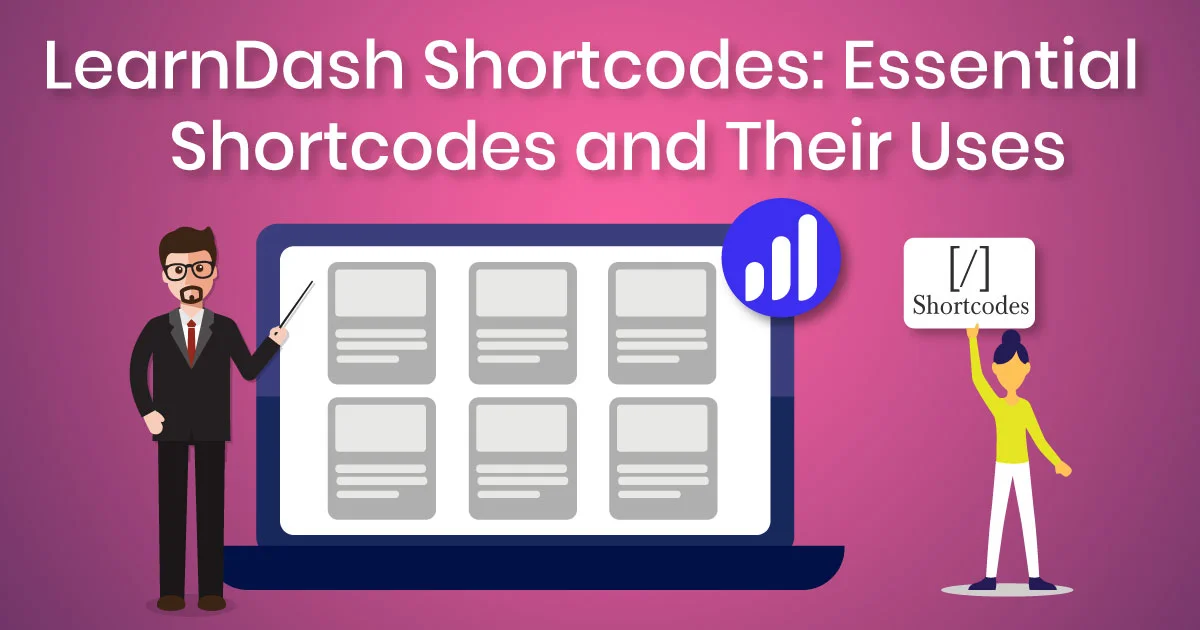

Leave a Reply